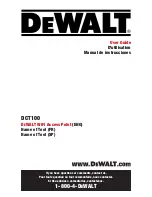
Access Point Deployment Guide
17
NOTICE: The contents of this document are proprietary and confidential and the property of Trilliant Holdings, Inc.,
its subsidiaries, affiliates, and/or licensors. This document is provided subject to the confidentiality obligations set
forth in the agreement between your company and Trilliant. The contents may not be used or disclosed without the
express written consent of Trilliant.
•
Ethernet cable type and length, if required
•
Gateway port number
•
AP IP Address type, Static or Dynamic
•
Server port
•
AP IP Address assignment, if static
•
Reuse code
•
Netmask setting
Installation Considerations
When planning a new AP installation, the following items must be considered.
AP Antenna
The AP antenna should be mounted at a location that minimizes physical obstructions between
the antenna and the endpoints with which it will be communicating. Rooftop installations create
the largest concern in this area. Antenna placement and height are very important to maximize
network performance. The AP antenna should be securely mounted in a vertical position. The AP
antenna cable is connected to a type-N female connector on the AP.
There are a variety of antenna options available to address the regulatory requirements of
different countries.
AP Antenna Cable
A 50-ohm low loss coaxial cable is used to connect the antenna to the AP. The type of cable is
selected based on the length of the cable run and network design requirements. For short runs, a
½ inch cable such as Andrew LDF4-50A is recommended. For longer runs, a ⅞ inch cable or 1⅝
inch cable may be used to reduce the cable attenuation.
The antenna cable should always be attached to the tower or other structure with clamps at the
spacing recommended by the manufacturer. It is also very important to maintain the minimum
bending radius recommended by the manufacturer to avoid kinking the cable during installation.
When using an antenna cable larger than ½ inch, ½ inch LDF4-50A jumpers with type-N male
connectors, typically 3 feet to 6 feet long, should be installed between the antenna cable and both
the antenna and the AP to minimize the chance of damage to their connectors. The AP and the
AP antenna use type “N” female connectors.
Note:
The total RF cable loss from AP Antenna connector to the antenna must be calculated
or measured with antenna system test equipment during installation as detailed in
“Antenna System Sweep Testing” on page 29. This value in dB is used when
configuring the AP in the EMS.
Note:
All outdoor antenna cable connections must be weather sealed in an appropriate
manner.
















































